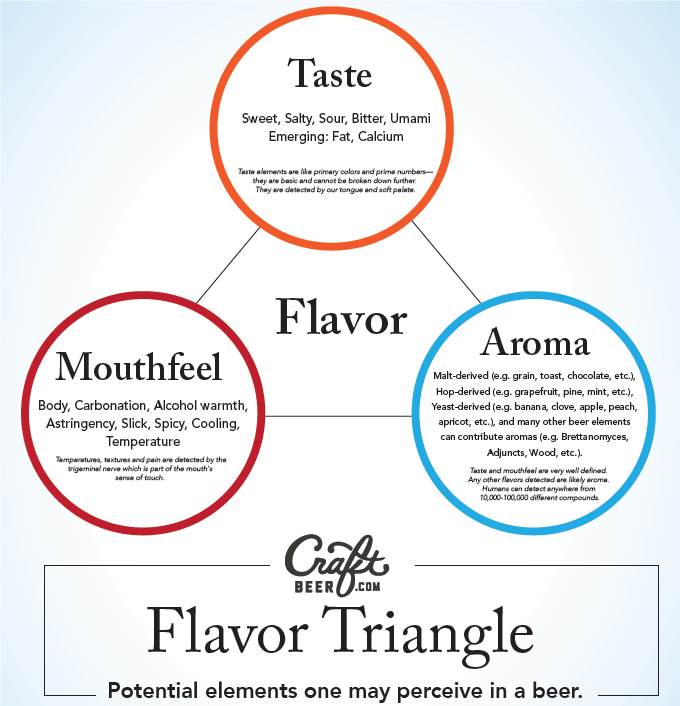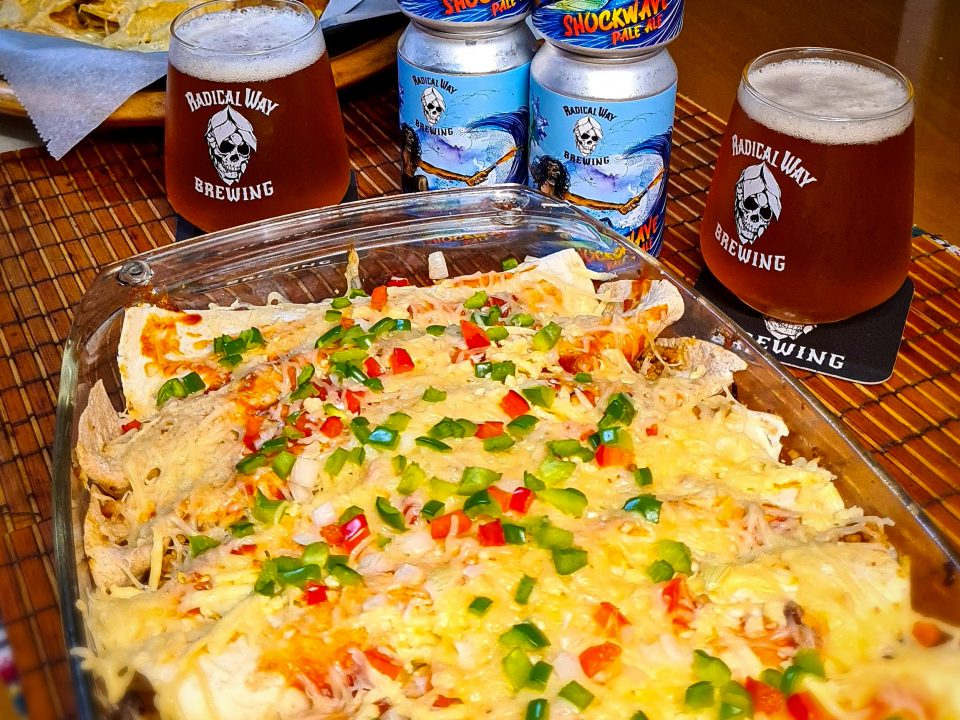
Craft Beer in a Can!!
October 28, 2020
Craft Beer and Food Pairing: Part 2
February 5, 2021
During the past few decades, our understanding of the science behind brewing craft beer has been rapidly advancing. This has led to an explosion in craft beer styles and brewing methods, as well as innovative ingredients and flavors.
In more recent years, craft beer has been slowly making its way into a territory which, for a long time, was almost exclusively reserved for another popular beverage: wine. We are of course talking about food pairing.
In this two-part blog post we will be exploring the world of beer and food pairing. In Part 1, we want to show how the unique characteristics and variety in styles found in craft beer can lead to exciting and creative combinations with food. The next part will provide you with some basic guidelines for pairing craft beer with food, which you can use to discover the best combinations for you.
Tastes, Flavors and Sensations
Before we get into the specifics, let’s first look at how we actually perceive taste, which is what we want to optimize when pairing beer with food. When we consume foods and drinks, two sensory systems work in unison to produce what we taste: the gustatory and the olfactory systems.
Our tongue’s taste buds are the main driver of the gustatory system, and they are capable of distinguishing between five main tastes: sweetness, saltiness, bitterness, sourness and umami (savoriness).
Flavor is picked up by our sense of smell, which is controlled by the olfactory system. Our nose contains receptors which are activated when an odor binds to them. In contrast to the tongue, which can only recognize five basic tastes, the nose can identify thousands of smells and, as a result, flavors.
The final component influencing the taste we perceive is sensation, for example spiciness, metallic feeling, or the sensation of fresh/spoiled ingredients.
Beer is revolutionizing the alcoholic beverage-food pairing world
Regardless of the drink, the goal of pairing alcoholic beverages with food is to complement or contrast the flavors of the drink to the flavors of the dish. A delicate balance must be found in order to achieve this, as neither component should overwhelm its counterpart.
Wine has historically been the most common beverage chosen for food pairing, partly due to the widespread perception that it is a “classier” beverage, leaving beer to the pubs and sports bars. This attitude is mostly the result of the cheap, mass-produced beer from macro-breweries controlling the market, but it is rapidly changing as consumers become increasingly aware of the complex and limitless tastes that craft beer can attain.
Brewers have a wealth of options when it comes to the basic ingredients of beer: the degree of roasting and type of grains used (wheat, barley, maize, rice), the amount and variety of hops and finally yeasts and even water can be selectively chosen. Add barrel ageing to the mix, and there is fertile ground for new flavors! Moreover, craft brewers are constantly experimenting with exciting ingredients, pushing the boundaries of achievable beer flavors.
While winemakers are also at liberty to experiment, they are limited by the number of basic ingredients at their disposal and the amount of variation they can introduce to them. More importantly, grapes depend on the quality and yield of harvests, and wine-producing regions are geographically-limited throughout the world.
The complexity of beer flavors, as described in the previous section, is what makes beer suitable for nearly every kind of food, as beer can be sweet, sour, bitter and anything beyond and in between. As wine and cheese becomes an overdone pairing, beer is rightfully claiming its place next to wine!
Beer characteristics and their interactions with food
Although each beer is unique, its taste is a product of a specific set of components which impart different characteristics. Each of these components will be present in the beer at different strengths. When selecting a beer for food pairing, this relative strength or different components can help us find the most appropriate beer.
- Body: The body of the beer is an essential attribute to consider when it comes to food pairing. Light bodied beers will usually pair well with a light meal, such as a salad, while full bodied beers are more suited to accompany a rich and heavier meal.
- Malt: Malt is one of the four main ingredients used in brewing, influencing the flavor, color and character of the beer. A lot of variation can result from the brewer’s choice of malt, with bready, biscuity, caramely, roasty and other flavors all possible depending on the malts used in each beer. A beer with roasted malt flavours can be selected to complement a chocolatey dessert, and a beer with malt sweetness to balance the spiciness in a meal.
- Bitterness and Aromatics: The type and amount of hops, as well as the timing and duration of their presence in the brewing process play a vital role on the bitterness level and aromas of a beer. A beer with high levels of bitterness, such as an IPA, emphasises spiciness in a dish, but also can neutralise sweetness. Beers with rich hop aromas, such as highly dry hopped pale ales, can accompany acidic foods.
- Carbonation: If we want to select a beer in order to cleanse out our palate and cut through some strong flavours of a meal, such as umami, then the beer’s carbonation level may be an important characteristic to consider when pairing.
- Alcohol: The above characteristics are generally more important when selecting a beer for food pairing, however a beer’s ABV can also be used to influence the pairing. High levels of alcohol can cleanse the palate and balance sweet and umami characteristics in a meal.
- Additional ingredients and ageing of a beer: Apart from the four main ingredients (malt, hops, yeast, water), brewers are constantly experimenting with a lot of other ingredients, such as spices, fruits, chocolate, vanilla, coffee beans, lactose, sweets… the list can go on forever! In addition, different brewing and ageing techniques (such as barrel ageing) can give their own twist and unique character in a beer, thus affecting the interaction a beer will have with a dish. So look out for any additional ingredients in your beer which might pair well with your dish.. in some cases they might even share the same ingredient!!

We’ve looked at how complex the flavor profile of a craft beer can be. As consumers increasingly start viewing beer as something more than just a cheap, bland beverage, more variety is introduced by craft brewers in their styles and ingredients. This attitude change isn’t just limited to consumers. Restaurants are slowly realizing that beer is perfect for food pairing and introducing beers to their menus.
In the next part, we will be looking at some steps which you can use as a guide to discover the best beer-food pairings for you.. Stay tuned!!





